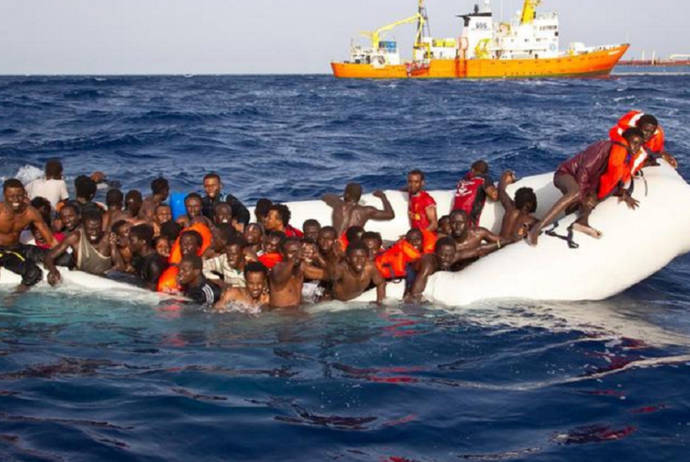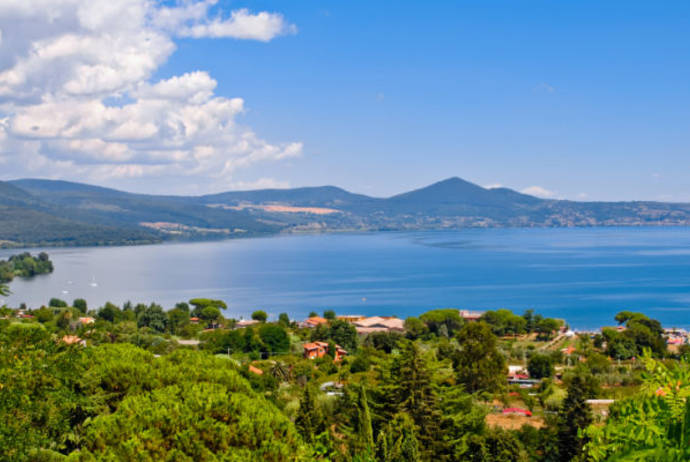Despite its creativity and some positive signs for the economy, Italy's agenda is weighed down by a series of particularly complex problems: a seemingly unstoppable influx of migrants, a public debt that continues to rise, a laggard economy, and corruption scandals that reach into almost unthinkable political and judiciary levels. On the bright side exports are up, the number of those employed has consistently increased since 2013, and industry confidence is also on the rise.
Taking the problems one by one, the current upsurge in migrants is partly the result of events beyond Italy's control. In recent years Italy was generously lax in allowing migrants more or less easy entry because the arrivals tended to then move on to Northern European countries where they had relatives, such as Scandinavia or Germany. More recently, however, and which explains (if only in part) the sudden increase in migrants arriving on Italian shores and remaining here, is that Germany has cracked down on its arrivals and its expulsions while Spain and Morocco have signed a bilateral agreement limiting those arriving on the Spanish shores.
Most importantly, the war in Syria makes Italy and especially Greece easier to reach. As of April, around 25,000 migrants, between 30 and 40% more than during the same period last year, had reached Italy, about half of them by sea. April 15, when 2,000 landed within 24 hours, was a particularly bad day. In 2006 Spain received 31,600 migrants from Senegal, Mauritania, and Morocco while in 2015 that figure hand dwindled to 874.
One result is that Italy has joined forces with Germany in seeking an EU mission to stop human smuggling. Together, Italian Interior Minister Marco Minniti and his German equivalent, Thomas de Maiziere, are promoting an effort to block West African migrants at the Libyan border with Niger. Libya is described as the springboard for those seeking to arrive in Europe, and the question becomes ever more urgent with improvements in weather conditions. Because Libya is crucial, a few Italian commentators have expressed a certain cynical nostalgia for the Ghedaffi era.
The migration statistics are painful, but what is worse is evidence–reported widely in Italian media this week–that investigators have found connections between the Calabrian-based 'Ndrangheta and the theft of government contributions for running an asylum center. During a dawn raid May 15 a total of 70 people, including Roman Catholic priest Don Edoardo Scrodio, 70, of Crotone, were arrested on charges that over the past decade a Catholic charity at Isola Capo Rizzuto, which housed some 1,200 migrants, was exploited by mobsters, who ripped off the public funding supposed to pay for migrants' food and laundry. Besides the arrests, police seized some $90 million of property. In 2012 the BBC dubbed the 'Ndrangheta "the biggest cocaine smugglers in the world."
A more ambiguous scandal has also been haunting Italy: that some charity ships in the Mediterranean near the coast with Libya were actually in collusion with traffickers on land. This accusation was made by a Sicilian prosecutor who acknowledges that the charges have no solid legal basis, but the accusations have seriously damaged the reputation of certain of the rescue operators. And in the meantime the dead at sea have risen by 15% over the past year.
The latest figures on public debt, as calculated by the Bank of Italy, show that it has risen to an historic level, 2,260.3 billion Euros ($2,504.7 billion), whereas only three months ago it had seemed to be shrinking. Just four weeks ago Fitch, citing "weak economic growth," downgraded Italy's credit rating from "BBB+" to "BBB," which the Financial Times explains is just two notches above speculative-grade. One problem: "banking sector weakness." (See: >>>) And indeed the media here are on a major bank scandal orgy.
The economy continues to show slower growth than in the rest of Europe. Again citing Bank of Italy statistics of May 10, family consumption is down, and investments are lagging after six years of growth. Unemployment stands under 12%.
In this litany of problems, the most perplexing to deal with may be immigration–and this, ironically, in a nation which in the last century and a half was itself of migrants who enriched the nations to which the emigrated.







































